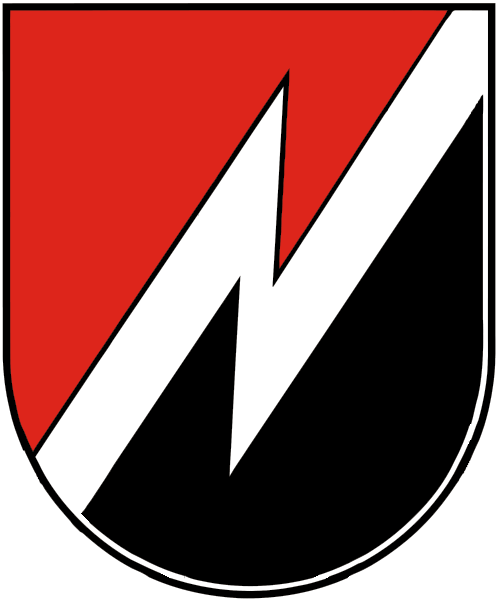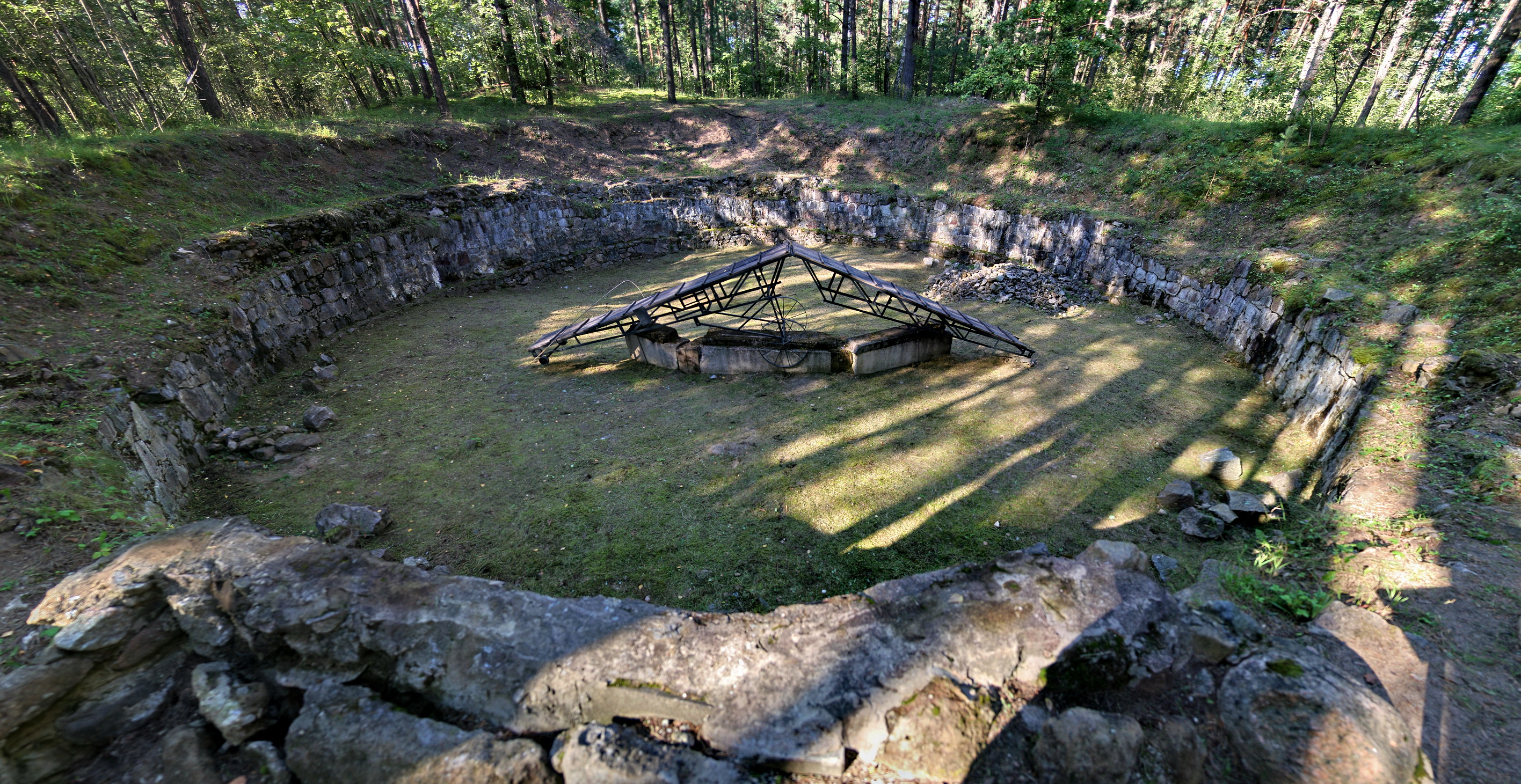|
Kaišiadorys
Kaišiadorys (; Yiddish: קאָשעדאַר) is a city in central Lithuania. It is situated between Vilnius and Kaunas. Kaišiadorys is one of six Lithuanian diocese centres. It is home to the Transfiguration Cathedral, Kaišiadorys, Cathedral of the Transfiguration of Christ built in 1932. The Lithuanian Veterinary Institute is located there. Etymology The name of the town was first mentioned in the written sources in 1590. It is believed to originate from the name of a nobleman ''Chašaidaras'', an ethnic Lipka Tatars, Tatar, who was enlisted to the Grand Ducal Lithuanian Army in 1565. In the area of the present day town, the nobleman had some land and a mansion, referred to by his name, which later became the name of the settlement. History The city expanded when a Libau–Romny Railway, railroad connecting Vilnius with Liepāja was built in 1871. During the World War I, First World War, the town was occupied by the Germans in 1915, and it became the capital of an administrat ... [...More Info...] [...Related Items...] OR: [Wikipedia] [Google] [Baidu] |
Kaišiadorys District Municipality
Kaišiadorys District Municipality is one of 60 municipalities in Lithuania Lithuania, officially the Republic of Lithuania, is a country in the Baltic region of Europe. It is one of three Baltic states and lies on the eastern shore of the Baltic Sea, bordered by Latvia to the north, Belarus to the east and south, P .... Elderships Kaišiadorys District Municipality is divided into 11 elderships: References External links Žasliai Web PageŽasliai is in Kaišiadorys District Municipalities of Lithuania {{KaunasCounty-geo-stub ... [...More Info...] [...Related Items...] OR: [Wikipedia] [Google] [Baidu] |
Elderships Of Lithuania
A ''seniūnija'' (in English: eldership, elderate, ward, parish, or subdistrict) is the smallest Subdivisions of Lithuania, administrative division of Lithuania. An eldership may comprise a very small region consisting of few villages, one single town, or a part of a big city. Elderships vary in size and population depending on their location and nature. A few elderships make up a municipality. Šilainiai, Dainava (Kaunas), Dainava, Verkiai, Žirmūnai and Pašilaičiai are the most populous elderates, with population counts over , around twice the population of some entire municipalities. Elderships manage small-scale local matters, such as repairing pavements and dirt roads, and keep records on all families living in the eldership. The premise of the concept is that — unlike in higher administrative divisions — an Elder (administrative title), elder (the leader of the eldership) could have time to talk to every person in the eldership who wants to. Modern Lit ... [...More Info...] [...Related Items...] OR: [Wikipedia] [Google] [Baidu] |
Transfiguration Cathedral, Kaišiadorys
The Cathedral of the Transfiguration of Our Lord () also called Kaišiadorys Cathedral is the name given to a Catholic religious building that serves as the Cathedral of Kaišiadorys, a city of the European country of Lithuania, and the seat of the Diocese of Kaišiadorys. In 1906 a committee for the construction of the church was created. In the following years three different projects for the construction of the structure were developed. Only in 1914 it was adopted the final, made by Wacław Michniewicz. In 1932 the church was finally built and in 1934 became the headquarters of the curia. On 10 May 1936 the church was elevated to the cathedral and this time Pope Pius XI sent a gift for safekeeping. In 1944 the cathedral was severely damaged as a result of World War II, and during the period of Soviet occupation was closed to worship and destined for another use, until 1987, when Lithuania regained its independence and religious events were reestablished. The crypt of the ... [...More Info...] [...Related Items...] OR: [Wikipedia] [Google] [Baidu] |
Kaunas County
Kaunas County () is one of ten counties of Lithuania. It is in the centre of the country, and its Capital (political), capital is Kaunas. On 1 July 2010, the county administration was abolished. Symbols The county's coat of arms can be blazoned as follows: ''Gules, an aurochs head cabossed, caboshed argent ensigned by a cross Or between his horns enclosed by a bordure purpure charged with ten evenly distributed crosses of Lorraine Or.'' The flag's heraldic blazon is identical, since the flag is a banner of the arms. Municipalities The county is subdivided into municipalities: References External linksSocial and demographic characteristics of Kaunas CountyEconomy of Kaunas CountyEnvironment of Kaunas County Kaunas County, Counties of Lithuania {{KaunasCounty-geo-stub ... [...More Info...] [...Related Items...] OR: [Wikipedia] [Google] [Baidu] |
List Of Municipalities Of Lithuania
__NOTOC__ Lithuania is divided into three levels of administrative division of Lithuania, administrative divisions. The first-level division consists of Counties of Lithuania, 10 counties (Lithuanian language, Lithuanian: singular – ''apskritis'', plural – ''apskritys''). These are sub-divided into 60 municipalities (Lithuanian: plural – ''savivaldybės'', singular – ''savivaldybė''), which in turn are further sub-divided into over 500 smaller groups, known as elderships of Lithuania, elderships (Lithuanian: plural – ''seniūnijos'', singular – ''seniūnija''). At the end of its tenure as a Soviet Socialist Republic, Lithuania's administrative divisions consisted of 44 regions, 12 cities, 80 towns, 19 settlements, and 426 rural districts. The reform of this system was an immediate concern for the new government. The Constitution of Lithuania, ratified in 1992, delegated the power of establishing future administrative units to the Lithuanian Parliament (Seimas). Acc ... [...More Info...] [...Related Items...] OR: [Wikipedia] [Google] [Baidu] |
Counties Of Lithuania
The territory of Lithuania is divided into 10 counties ( Lithuanian: singular ''apskritis'', plural ''apskritys''), all named after their capitals. The counties are divided into 60 municipalities (Lithuanian: singular ''savivaldybė'', plural ''savivaldybės''): 9 city municipalities, 43 district municipalities and 8 municipalities. Each municipality is then divided into elderates (Lithuanian: singular ''seniūnija'', plural ''seniūnijos''). This division was created in 1994 and slightly modified in 2000. Until 2010, the counties were administered by county governors (Lithuanian: singular – ''apskrities viršininkas'', plural – ''apskrities viršininkai'') appointed by the central government in Vilnius. Their primary duty was to ensure that the municipalities obey the laws and the Constitution of Lithuania. They did not have great powers vested in them, and so it was suggested that 10 counties are too much for Lithuania as the two smallest counties administer only four ... [...More Info...] [...Related Items...] OR: [Wikipedia] [Google] [Baidu] |
Libau–Romny Railway
Libau–Romny Railway was a railway company that built a railway line in the Russian Empire in 1871–74 to connect Romny in Ukraine with the port in Libau (Liepāja) in present-day Latvia. To do so it passed through Minsk. The objective of the railway was to deliver Ukrainian exports, particularly grain, to the Baltic Sea where it could be further shipped. History In 1856 a concession to build the railway was granted to the main Russian railway company (Главное общество российских железных дорог), but it failed to gather the required authorised capital. Afterwards the concession was granted to the Libau-Romny railway company which was founded by businessmen who were interested in exporting Ukrainian grain. The company was headed by engineer baron Karl Otto Georg von Meck. Design works started in 1869. On 15 December 1871 the state finished and approved the design, the new railway line was supposed to cross the Courland, Kaunas, Vilnius, M ... [...More Info...] [...Related Items...] OR: [Wikipedia] [Google] [Baidu] |
Aukštaitija
Aukštaitija (; literally ''Highland'' or ''Upland'') is the name of one of five ethnographic regions of Lithuania. The name comes from the fact that the lands are in the upper basin of the Nemunas, as opposed to the Lowlands that begin from Šiauliai westward. Although Kaunas is surrounded by Aukštaitija, the city itself is not considered to be a part of any ethnographic region in most cases. Geography Aukštaitija is in the northeast part of Lithuania and also encompasses a small part of Latvia and Belarus. The largest city located entirely within this region, Panevėžys, is considered to be the capital, though not in a political sense. Sometimes Utena is regarded as a symbolical capital. The largest cities by population are: * Panevėžys – 84,587 * Jonava – 26,423 * Utena – 25,397 * Kėdainiai – 22,677 * Ukmergė – 20,154 * Visaginas – 18,024 * Radviliškis – 15,161 The region has many lakes, mainly on the eastern side. Subdivisions History Historic ... [...More Info...] [...Related Items...] OR: [Wikipedia] [Google] [Baidu] |
Einsatzgruppen
(, ; also 'task forces') were (SS) paramilitary death squads of Nazi Germany that were responsible for mass murder, primarily by shooting, during World War II (1939–1945) in German-occupied Europe. The had an integral role in the implementation of the so-called " Final Solution to the Jewish question" () in territories conquered by Nazi Germany, and were involved in the murder of much of the intelligentsia and cultural elite of Poland, including members of the Catholic priesthood. Almost all of the people they murdered were civilians, beginning with the intelligentsia and swiftly progressing to Soviet political commissars, Jews, and Romani people, as well as actual or alleged partisans throughout Eastern Europe. Under the direction of Heinrich Himmler and the supervision of SS- Reinhard Heydrich, the operated in territories occupied by the ''Wehrmacht'' (German armed forces) following the invasion of Poland in September 1939 and the invasion of the Soviet Un ... [...More Info...] [...Related Items...] OR: [Wikipedia] [Google] [Baidu] |
Soviet Union
The Union of Soviet Socialist Republics. (USSR), commonly known as the Soviet Union, was a List of former transcontinental countries#Since 1700, transcontinental country that spanned much of Eurasia from 1922 until Dissolution of the Soviet Union, it dissolved in 1991. During its existence, it was the list of countries and dependencies by area, largest country by area, extending across Time in Russia, eleven time zones and sharing Geography of the Soviet Union#Borders and neighbors, borders with twelve countries, and the List of countries and dependencies by population, third-most populous country. An overall successor to the Russian Empire, it was nominally organized as a federal union of Republics of the Soviet Union, national republics, the largest and most populous of which was the Russian SFSR. In practice, Government of the Soviet Union, its government and Economy of the Soviet Union, economy were Soviet-type economic planning, highly centralized. As a one-party state go ... [...More Info...] [...Related Items...] OR: [Wikipedia] [Google] [Baidu] |



